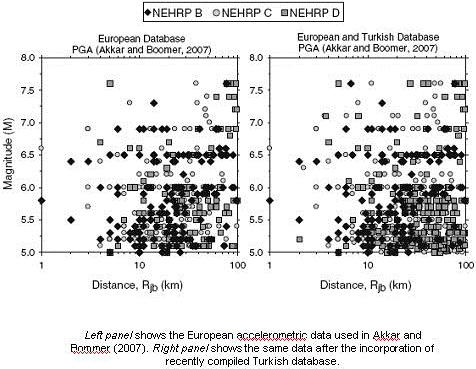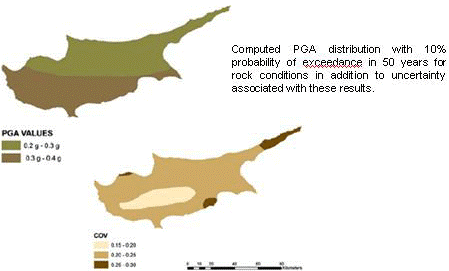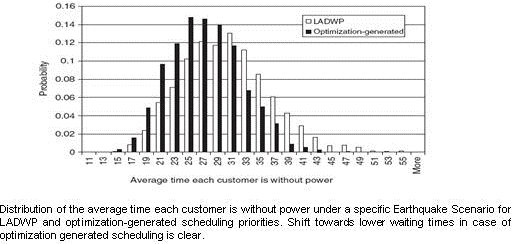Zehra Cagnan – Engineering Seismology, Seismic Hazard Assessment, Earthquake Vulnerability
The Recently Compiled Turkish Strong Motion Database: Preliminary Investigation for Seismological Parameters Akkar S., Z. Çagnan, E. Yenier, O. Erdogan, M.A. Sandikkaya, P. Gülkan. 2009. Journal of Seismology (Available online since 13.08.09)
In this study, strong motion data recorded by the Turkish national strong motion network has been compiled and processed systematically for the first time, together with detailed geophysical and geotechnical site measurements for all of its stations. The catalog information of 18 seismological agencies were examined to obtain reliable source, geometry, and distance parameters for each event. The high quality digital and analog strong motion data was processed by a uniform methodology to remove the high- and low-frequency noise. Currently, the seismological and spectral information of 4,607 strong motion records are available for use by earth scientists and earthquake engineers. Results indicate that the magnitude and distance distributions of the European accelerometric data will improve significantly with the integration of new Turkish database. The findings of this study emphasize the necessity of global strong motion databases in Europe for better estimation of seismic hazard in regions of similar seismotectonic environment.
Seismic Hazard Assessment for Cyprus Çagnan, Z., G. B. Tanircan. 2009. Journal of Seismology (Available online since 01.05.09)
The present study offers a new, comprehensive assessment of the seismic hazard of Cyprus. Within the scope of this study, an earthquake catalog spanning the period 2150 B.C.–2006 A.D., where each earthquake is characterized by several entries coming from different sources, was created for systematic analysis. The seismic source models used were selected based on a broad review of studies on tectonic setting and seismic hazard of the Northeastern Mediterranean region. The most recent attenuation relationships developed for shallow and intermediate depth earthquakes were employed as local attenuation relations are deficient. In order to minimize the importance of choice of seismic source models and attenuation relationships, the logic tree approach was used to combine individual results stemming from different source models and attenuation relationships. The effect of uncertainty associated with recurrence models was also incorporated into the seismic hazard assessment by addition of further branches to the logic tree. Final results indicate a high hazard along the southern coastline of the island, reaching a peak at Paphos region. The rest of the island is characterized by moderate values. Results also indicate high sensitivity of seismic hazard estimates to seismic source and recurrence models underlining urgent need for detailed study of seismic sources in the Northeastern Mediterranean area. A strong basis for revision of the EC8 acceleration spectrum, which is currently anchored only to PGA and move towards use of more than one parameter for the construction of response spectrum [i.e., at least three parameters as suggested by Bommer and Pinho (2004)] was detected. Such a revision would make it necessary to replace the current macro-seismic intensity based seismic hazard zonation map being used in the National Annex of Cyprus to EC8 with the results of a probabilistic seismic hazard assessment study such as the present study.
Optimizing Scheduling of Post-earthquake Electric Power Restoration Tasks Ningxiong, X., S.D. Guikema, R.A.Davidson, L.K. Nozick, Z. Çagnan, and K. Vaziri. 2007. Earthquake Engineeering and Structural Dynamics, Vol 36, 265-284.
The extent and duration of post-earthquake electric power outages are important determinants of the final economic and social impact of an earthquake. The 1994 Northridge earthquake caused the first system-wide blackout in Los Angeles and approximately $74 million in direct total power outage-related economic loss. Studies on financial losses in the Northridge earthquake indicate that the loss of electricity was the strongest predictor of total dollar loss experienced by a business, with a business’s loss increasing dramatically when the outage lasted longer than 24 h. Residents rated electric power one of the most important elements of the built environment in terms of the need for it to remain functional in a major earthquake, and 59% of surveyed businesses reported that the loss of electric power would cause them to shut down immediately. Currently, there are no set standards for what constitutes acceptable power system performance in a major earthquake (unlike performance during normal operations). In practice, public utility commissions review performance on a case-by-case basis following each major event, and the public makes its own assessment. It would be helpful to have a more consistent method for evaluation, and one that could be used before an event, when the power company is still able to make changes if it determines the expected performance is unacceptable. By comparing the current expected performance of the system with the theoretical best possible performance, a benchmark to help assess how fast is fast enough could be obtained. Weighing this evaluation with the cost of undertaking the suggested optimal strategy and the economic and social benefits associated with the resulting reduction in power outage durations can then help a utility company determine if it should try to improve its current restoration process. In this study, a stochastic integer program to determine how to schedule inspection, damage assessment, and repair tasks so as to optimize the post-earthquake restoration of the electric power system was developed. The objective of the optimization is to minimize the average time each customer is without power, and a genetic algorithm is used to solve it. The effectiveness of the schedules recommended by the optimization are evaluated by running a detailed discrete event simulation model of the restoration process with both the optimization-generated schedules and the power company’s original schedules, and comparing the resulting restorations according to three measures—average time each customer is without power, time required to restore 90% of customers, and time required to restore 98% of customers. The optimization and simulation models were developed through an application to the Los Angeles Department of Water and Power (LADWP) electric power system, but the general approach of this study is extendable to other electric power systems, other lifelines, and other hazards.










